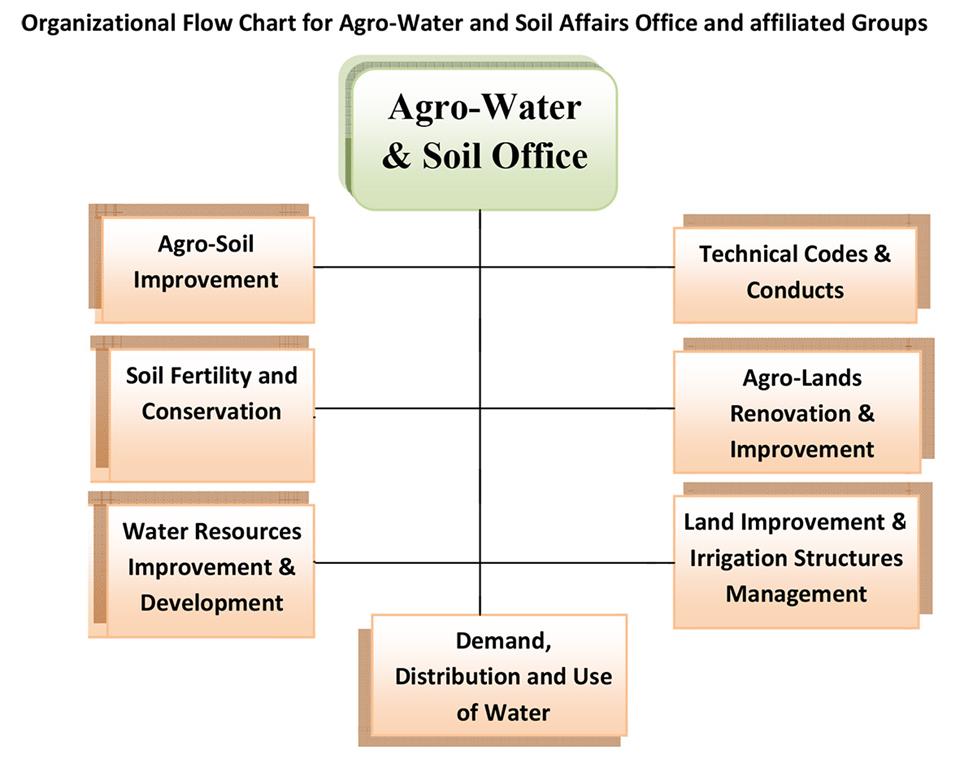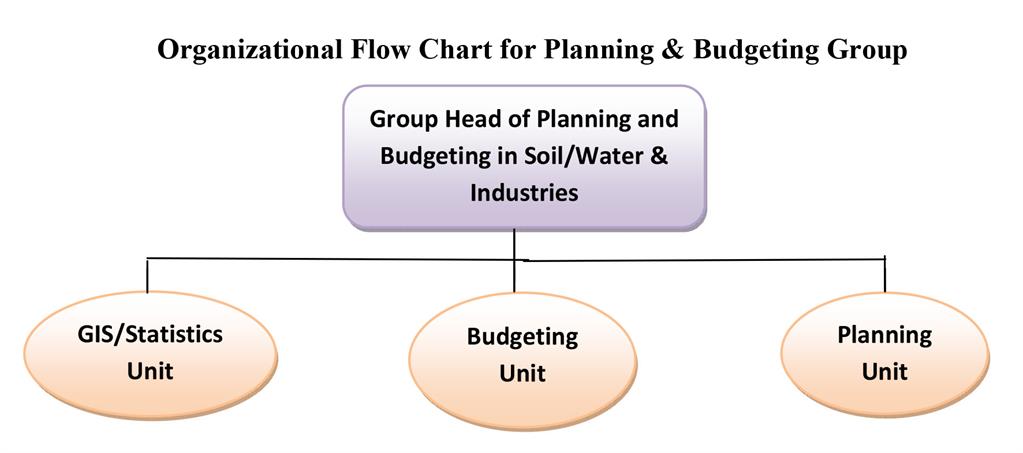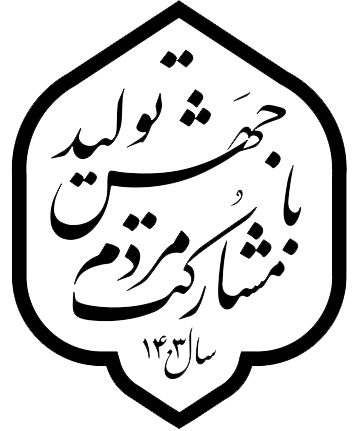

- Coordination with relevant offices in the Ministry of Energy in the area of normative for lateral irrigation-drainage systems creation;
- Formulation of imperative initiatives for functioning traditional water resources;
- Planning and operating study, executive and monitoring measures on lateral irrigation-drainage systems;
- Planning and measuring in developing topographic and Cadastre maps regarding pre-requisites of Irrigation-systems and water conveyance in collaboration with concerned authorities;
- Investigation, monitoring and evaluation of the proposed plans/projects;
- Appraisal of the current status of implemented projects followed by reformative supplements for optimal formulation of future plans;
- Proposing pedologic surveys and land-classification and water-conveyance initiatives to respective institutions;
- Preparing regular reports for official authorities;
- Policy-making, assessing, re-planning, monitoring and evaluating subsidiary irrigation-drainage systems, water piping and traditional channel lining;
- Programming and monitoring on sound and effective commencement of the codes and conducts and addendums;
- Advising for new acts/regulations related to the field of irrigation-drainage systems;
- Determination of short, medium and long terms schedules in irrigation-drainage systems operation;
- Analysis and prioritization of needed investments and fund raising for lateral irrigation-drainage systems;
- Derivation of technical standards for studying, designing and operating lateral irrigation-drainage systems;
- Policy-making and programming on needs and priorities of research, training and extension activities geared to lateral irrigation-drainage systems and acquiring from authorizes institutions;
- Coordination and interaction with concerned agencies/authorities at national/provincial scales on lateral irrigation-drainage channels;
- Monitoring and evaluation on current plans and operations in the systems nationwide;
- Urging executive units in transferring their findings and new methodologies to site practitioners;
- Bedding ground for mobilizing private investments in lateral branches of the networks.

Rice, after wheat, is the key staple in the world food composition and it covers 587000 ha. of arable lands in Iran. More than 78% of paddy-fields are located in northern provinces with almost 81% of total production. There estimated around 2.7 m. tons as national requirement of which, 2.4 m. tons are harvested by local peasants. Based on FAO analysis, since 2000, paddy plantation has encountered serious drop mainly due to global soil and water limitation. The trend has also triggered certain crisis and concerns in future foodstuff supply. As foreseen by Int’l Rice Research Institute, world population is growing with 1.26% rate while rice production faces an annual decline of say, 2.16-2.5% leading to poor share of Iran in future world rice trade. Upon technical surveys, plantation in traditional, topographic and scattered fields having no access road, no modern irrigation-drainage systems, poses problematic endeavors for the farmers. This business, especially under severe competitions e.g. faked land-use revenues, loses its incentives and may be deviated to non-productive activities and serious threat to national Food-Security.
Given the foregoing challenges, executing the Plan of Development and Renovation of Paddy-Fields was undertaken since 1980, but interrupted or stagnated due to financial reasons. However, so far only 118000 ha. were improved and needs to be expanded to meet the target. Recently and as the Minister enforced, 105000 ha. were also allocated to the Plan for a 3-year schedule using foreign finances and facilities. The initiative is expected to involve wider mechanizations, second or even third cropping and higher irrigation performance (upto 30%), etc. leading to conversion of existing subsistence paddy fields to rather productive and industrial farming system.
Terms of Reference for the IT Group:
- Maintaining, controlling and updating software/hardware systems related to the Dept. of Water and Soil;
- Communication with other line offices to optimize decision-making system and sound and quick respond to upcoming issues;
- Standardization of the IP specifications and associated definitions in Data-Banks of the Ministry;
- Investigation and articulation of the needs for the Dept’s information systems;
- Undertaking the roles in running and functioning of the systems under the existing network’s setting;
- Launching logistic operations in running the systems and maintaining the supporting data and system files;
- Rendering consultations on installation and activation of the executive systems in line offices and provincial units;
- Monitoring and cooperation in Computer service provision to the Dept. premises.



